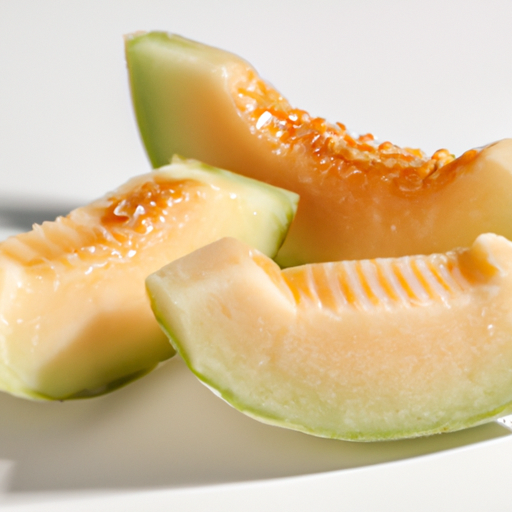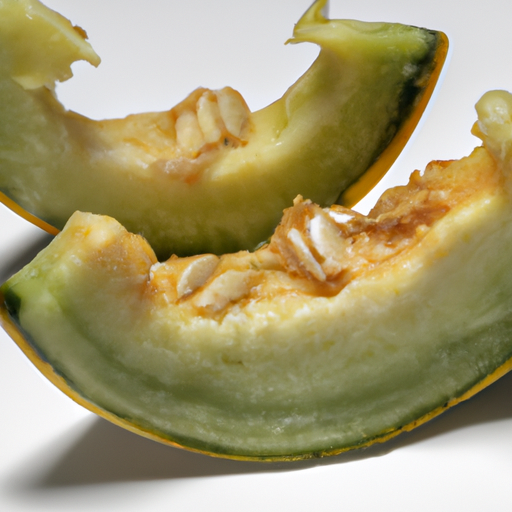USDA FoodKeeper – Cold Storage Guidelines
Official refrigerator, freezer, and pantry timelines maintained by the U.S. Department of Agriculture.
Visit USDA FoodKeeperWhether Crenshaw Melons Up is still safe to eat depends on storage conditions, initial freshness, and potential contamination—factors that may not be immediately apparent. Visual inspection alone isn't sufficient for determining Crenshaw Melons Up safety.
Not sure about your crenshaw melons fresh raw cut up? Check your exact situation →
Last reviewed: January 2026
Reviewed by the Can I Eat Expired Editorial Team using official USDA, FDA, and CDC food safety guidance
Discard it after the expiration date.
⚠️ Contaminated produce is a major source of foodborne illness outbreaks.
Every situation is different. Get a personalized food safety verdict for your crenshaw melons up based on the date, storage, and condition — in seconds.
👉 Check Food Safety Now

Fridge
32°F (0°C) to 40°F (4°C)
Store in an airtight container in the fridge. Best consumed within 3 days.
3 days
30 days
Slimy texture, off odor, mold growth.
In smoothies, fruit salads, or blended into desserts.
Other melons like cantaloupe or honeydew.
Every situation is different. Get a personalized food safety verdict for your crenshaw melons up based on the date, storage, and condition — in seconds.
👉 Check Food Safety NowThe expiration date for Crenshaw melons refers to the point after which the melon may not be safe to consume due to potential spoilage or bacterial contamination. On the other hand, the best quality of a Crenshaw melon is usually within a few days to a week of purchase when it's at its peak ripeness, juiciness, and flavor. While the melon may still be safe to eat after this time, the quality may decline in terms of taste and texture.
To determine if cut-up Crenshaw melon has gone bad, look for any mold growth, a sour or fermented smell, or a slimy texture. Fresh melon should have a vibrant color, a sweet aroma, and a firm, juicy texture. If you notice any signs of spoilage, it's best to discard the melon to avoid consuming unsafe food.
Crenshaw melons, like all fresh produce, can pose a risk of foodborne illnesses if not handled and stored properly. To reduce the risk, make sure to wash the melon thoroughly under running water before cutting into it. It's also important to use clean utensils and cutting boards to avoid cross-contamination with other foods. Cut melon should be stored in the refrigerator at 40°F (4°C) or below and consumed within a few days to minimize the risk of bacterial growth.
To store a whole Crenshaw melon, keep it at room temperature until ripe, which can be determined by a fragrant aroma and slight softness at the stem end. Once ripe, store the whole melon in the refrigerator to slow down ripening and maintain freshness for up to a week. If you've cut up a Crenshaw melon, store the pieces in an airtight container in the refrigerator and consume them within a few days for the best taste and quality.
Crenshaw melons, named after the Crenshaw district in Los Angeles, are a hybrid melon created by crossing a Persian melon with a Casaba melon. They are known for their sweet and aromatic flavor, juicy flesh, and pale green to yellow rind with characteristic netting. Crenshaw melons are a popular summer fruit in the United States and are often enjoyed fresh, in fruit salads, or blended into refreshing smoothies.
If Crenshaw Melons Fresh Raw Cut Up has been left at room temperature for a few hours, it's generally safe to eat as it has a low risk level. However, if left out for an extended period, refrigerate it promptly to maintain freshness and reduce the risk of spoilage.
To safely transport Crenshaw Melons Fresh Raw Cut Up for a picnic, pack it in a cooler with ice packs to keep it chilled. Ideally, consume it within 2 hours of taking it out of the fridge. If the temperature exceeds 90°F (32°C), eat it within 1 hour to prevent bacterial growth.
Freezing Crenshaw Melons Fresh Raw Cut Up can alter its texture slightly upon thawing. The melon may become softer and slightly mushy due to ice crystal formation. Use frozen melon in smoothies or blended dishes where texture changes are less noticeable.
Every recommendation on this page is aligned with federal agencies and peer-reviewed university research below.
Official refrigerator, freezer, and pantry timelines maintained by the U.S. Department of Agriculture.
Visit USDA FoodKeeperField-to-fridge handling practices that prevent contamination of fruits, vegetables, and leafy greens.
Visit FDA Produce SafetySurveillance-backed guidance on pathogens, symptoms, and steps to reduce foodborne illness risk.
Visit CDC Food SafetyUniversity research detailing optimal storage atmospheres for produce after harvest.
Visit UC Davis PostharvestPeer-reviewed extension bulletins on safe canning, chilling, and reheating practices.
Visit Penn State ExtensionNeed deeper reading? Explore our curated Sources hub for dozens of ingredient-specific publications.
Dairy Products
View expiration date and storage guide →
Beverages
View expiration date and storage guide →
Cooking Ingredients
View expiration date and storage guide →
Beverages
View expiration date and storage guide →
Ready-to-Eat Meals
View expiration date and storage guide →
Dairy Products
View expiration date and storage guide →
Breakfast Foods
View expiration date and storage guide →
Dairy Products
View expiration date and storage guide →
Dairy Products
View expiration date and storage guide →
Important: These are general guidelines based on authoritative sources listed above. Always use your best judgment and when in doubt, throw it out. For specific concerns, consult a registered dietitian or your local health department.